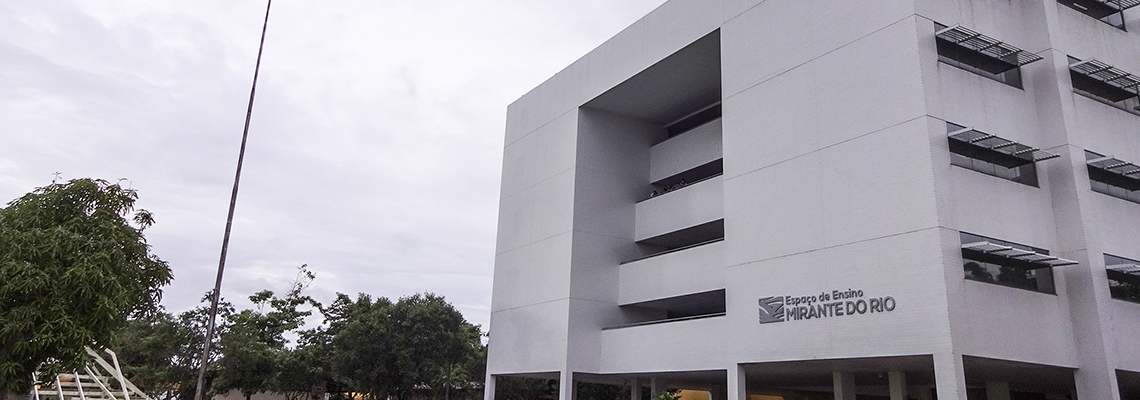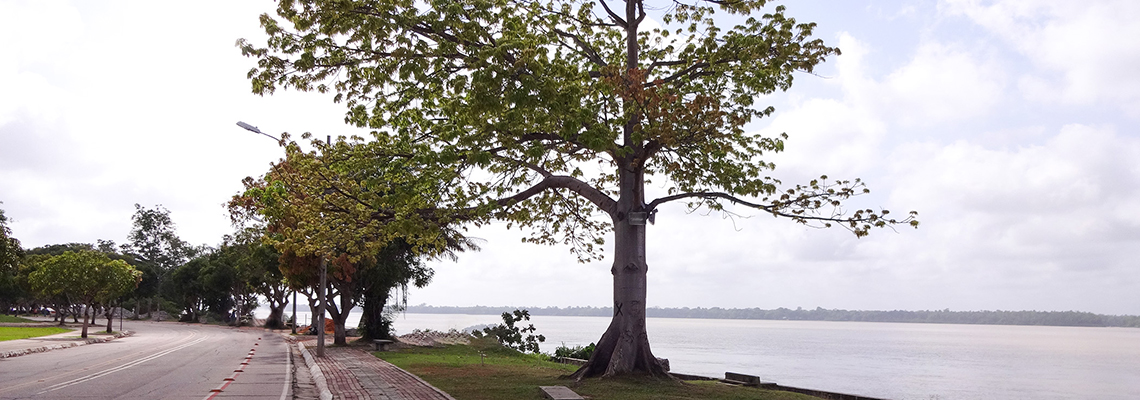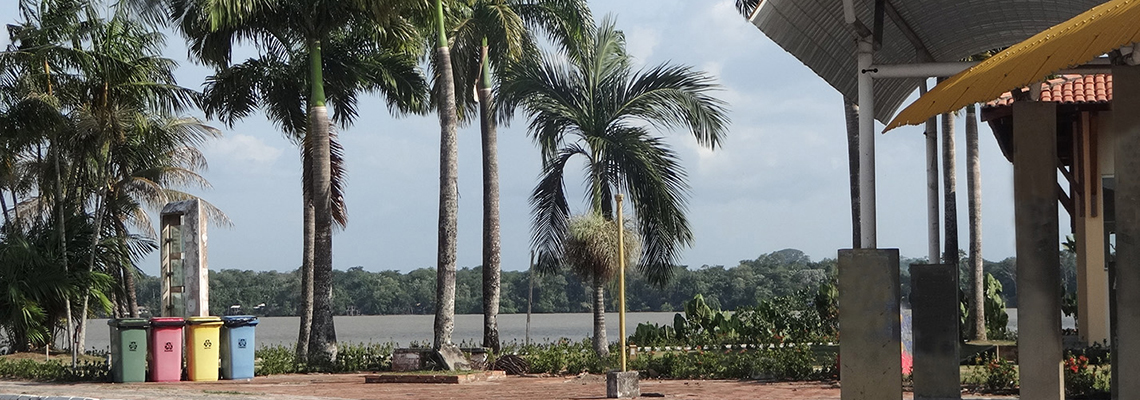Area of Concentration: Regional Economic Development
• Description: The regional economic development results from the emphasis given to local dynamics, whose evaluation under the historical perspective is strategic for the understanding of the factors related to it.
Research lines:
- Research Line 1: Agrarian Dynamics and Sustainable Development
- Research Line 2: Regional and Urban Economics
- Research Line 3: Economy, Society and Environment
Description of Research Lines
-
Agrarian Dynamics and Sustainable Development:
The economic dynamics associated with rural and agrarian economies worldwide has undergone structural changes in recent years in view of the strong process of globalization and integration of agricultural commodity markets on a scale never achieved before. Markets previously isolated from the rest of the world are now integrated into a large global market for raw materials and inputs for the food industry and other industrial and agricultural sectors in a strong expansion process in the international market. Sectors that, in general, start to demand a large quantity of agricultural products (and or extractive in some regions), and to stimulate the growth, in peripheral regions, of a land market and demand on the stock of natural resources with great impacts about its long-term territorial dynamics. In the specific case of the Amazon, this phenomenon has been observed predominantly through the phenomenon of deforestation and the exploitation of mineral resources, and evaluated basically by the environmental risks associated with it, from the contribution to global warming to the deleterious effects of possible savanization or devastation. the region's natural resources. On the other hand, it shows the uneven distribution of the results of such use of the natural base that should impact, negatively and with greater force, the great mass of the most fragile. In this context, there is an urgent need to devise strategies to reorient the present trends, which currently configure ecologically predatory and socially unequal development. For this, this line of research intends to deepen, in a specific way, the studies on agrarian dynamics in the Amazon. As well as its traditional agroextractive and agribusiness economic structure that has been constituted for centuries of history, involving studies on productive patterns based on the preservation of the Biome and on dynamics that, unlike the former, are logically opposed to the environmental preservation of the Amazon rainforest. At the same time, it is intended to deepen studies on the experiences of implementing major agricultural projects and studies on the dynamics of agrarian-based economies in the Amazon in the 20th and 21st centuries. From this point of view, we will seek to consolidate a theoretical and historical perspective on the regional economic dynamics that privileges reading. From its agrarian dynamics based on great technological trajectories based on the confluence of a diversity of agrarian systems with cuts at the level of mesoregions.
-
Regional and Urban Economy:
The research line Regional and urban development seeks to integrate projects and curriculum formation around the contemporary dynamics of development patterns and the political economy of the space of capitalist accumulation in Brazil and the Amazon. The establishment of a line of research focused on the listed aspects converges a set of scientific concerns that can be subdivided into the following aspects:
i) The profound changes in the macroeconomic and microeconomic dynamics established in the last decades. In very general terms, it can be observed that the current International Labor Division (DIT – Portuguese Acronym) has a great emphasis on the network format of global companies, with the central countries producing parts and components with high added value and in research. and development to generate knowledge producing technological innovation, in turn, peripheral countries participate intensively in the world market within a combination that becomes increasingly integrated by corporate planning.
ii) The growing interaction between Capitals, States and Multilateral Organizations, conditioning international power relations and measuring the greater or lesser fragility of national economies and the respective impacts on the regional and urban dimensions of the respective national economic formations.
iii) The urban dimension takes on new shapes, whether due to the formation of global megalopolises that polarize and nucleus a vast set of networks of medium-sized cities; either by structuring a wide range of medium-sized cities that surround and polarize a vast territorial environment.
iv) The debate itself on the topic of development has changed considerably in the last two decades, from being no longer just the elucidation of the factors referring to a higher or lower rate of growth, to start to incorporate other more qualitative aspects and, in several ways, more integrated with a theory of the dynamics of development, considering even the difficulty of guiding such a large and distinct set of social, economic, environmental and institutional vectors. Recent development theories note that one of the central aspects refers to the availability and governance capacity of institutions, especially those aimed at controlling the market (regulation) and planning development.
v) Economic expansion after the Second World War also brought the concern with the unrestrained use of natural resources and increased pollution, being intensified with the oil crisis in the early 1970s. In this context, the United Nations (UN) held in 1972 the Conference on the Environment, in Stockholm (Sweden), aiming to discuss proposals for prevention and improvement of the environment.
-
Economy, Society and Environment:
The economic understanding of the problems in the Amazon cannot ignore the fact that the region is the largest tropical forest on the planet. Thus, the problems associated with the environment and its interactions with the economy is the fundamental focus of one of the research lines of PPGE-UFPA. The Amazon is one of the regions in Brazil where the impacts of human occupation have the greatest global visibility and can eventually result in significant global impacts as well. Forest degradation, as part of these impacts, contributes to the global emission of carbon, one of the main sources of greenhouse effect. According to Nepstad et al. (2007), the Amazon alone has a stock of 48 9 billion tons of carbon distributed over 3.3 million square kilometers. In fact, the set of impacts of deforestation in the Amazon can be thought of in three directions, with socio-economic-environmental repercussions (externalities) of a local or global character: a) reduction of sustainable economic activities, such as the extraction of new forest resources loggers; b) loss of environmental services, than the carbon storage fund only one of them. They can be mentioned, among others: the cycling of nutrients, combating erosion, combating outbreaks of fire, climatic background, etc; c) loss of biodiversity and the potential benefits associated with it. Thus, it is possible to list from the economic point of view, loss of benefits related to its direct use value, its indirect use value (option value), and existence value. In fact, the loss of natural capital involves an environmental cost that can be measured in different dimensions. On the one hand, the loss of biodiversity potential, related to the use of natural resources. On the other hand, the use value of natural capital in the Amazon is far from being fully assessed. Of the more than 24 million people living in the region, a significant part of this population (approximately 7 million) lives in the countryside. A significant part of these people has fishing and extraction activities as their main source of income. The assessment of this natural capital, the impacts of anthropic change produced in the Amazon, as well as the alternatives for its sustainable use are the focus of this line of research.








